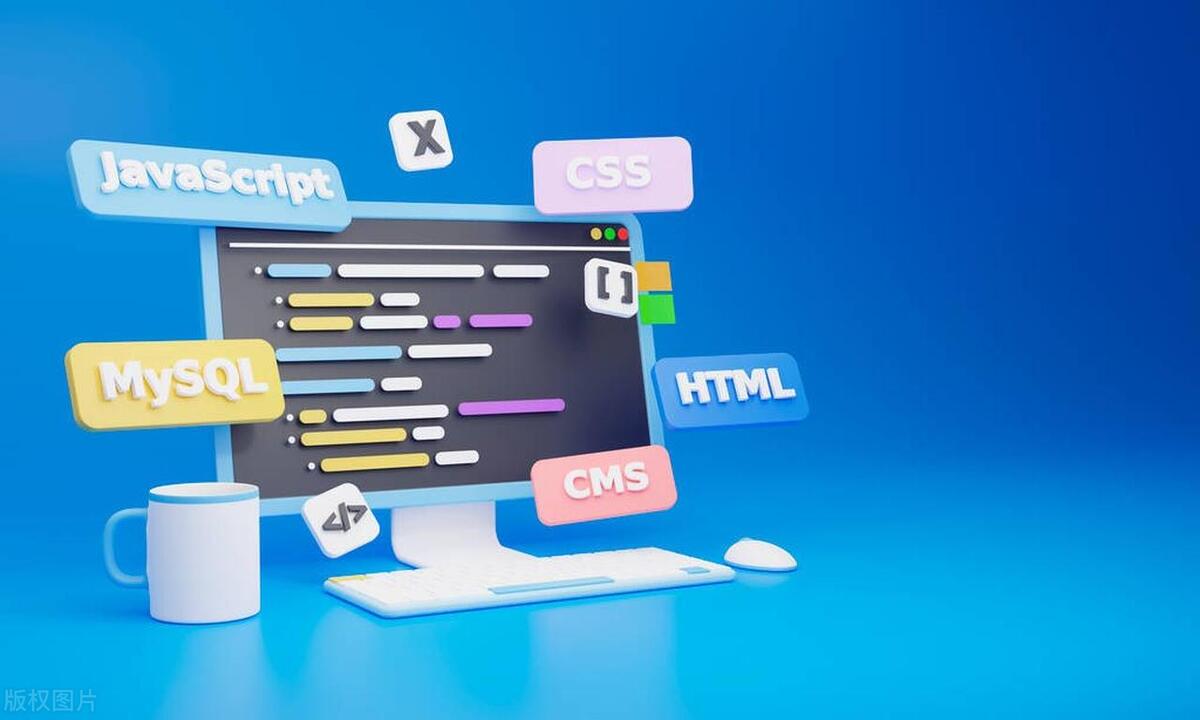Comparing CSS Loading Methods: @import vs Link Tag
Jul 13, 2025 am 12:45 AMIt is recommended to use the <link> tag to load CSS files for the following reasons: 1. The loading order is different, the parallel loading of <link> increases the speed, and the serial loading of @import causes delays; 2. The <link> is more compatible and easier to maintain, especially in old browsers and multi-person collaboration scenarios; 3. <link> supports performance optimization methods such as preload, but @import cannot participate in such optimizations.

There are two main ways to load CSS files: @import and <link> tags. Although both can introduce style sheets to web pages, their behavior and performance are significantly different in actual use.

To put it directly, the key point is: it is recommended to use the <link> tag to load CSS files instead of @import . The reasons are mainly focused on loading performance, browser compatibility and maintainability.

1. The loading order is different, which affects the rendering speed of the page
The <link> tag is loaded in parallel, that is, the browser will simultaneously download multiple CSS files introduced through <link> during the process of parsing HTML.
@import is a serial loading mechanism, which must wait until the main style sheet is loaded before requesting the imported style sheet. This can cause additional delay, especially when using @import nested, the page may have obvious "stylized moments".

For example:
/* styles.css */ @import url('theme.css');
The browser will first load styles.css and then load theme.css . If you introduce these two files with two <link> tags, downloading will start at the same time.
2. Compatibility and maintainability differences
Although modern browsers basically support @import , it behaves inconsistently in some older browsers (such as IE5-IE8) and may even be ignored. If you need to consider the support of older browsers, <link> appears to be more reliable.
In addition, from the perspective of code maintenance, too much @import nesting can easily cause structural confusion, especially when multi-person collaborative development, it is not easy to quickly locate the style source. In contrast, <link> is written directly in HTML, which is clear and convenient for debugging and management.
3. Impact on page performance
Use <link> to better utilize the browser's preloading mechanism, for example, you can load critical CSS files in advance by setting rel="preload" :
<link rel="preload" href="critical.css" as="style" onload="this.rel='stylesheet'">
This optimization method is very useful for improving the loading speed of the first screen, and @import is almost unable to participate in this type of advanced optimization.
Let’s summarize a few key points:
-
<link>is loading in parallel, faster;@importis loading in serial, slower. -
<link>supports more optimization methods, such as preload, media query, etc. -
<link>is more conducive to team collaboration and maintenance. -
@importis mainly used to organize modular styles in CSS files, but is not the preferred loading method.
Basically that's it. Unless you have a special reason to use @import (such as organization internal style modules), it is recommended to use the <link> tag to load CSS files first.
The above is the detailed content of Comparing CSS Loading Methods: @import vs Link Tag. For more information, please follow other related articles on the PHP Chinese website!

Hot AI Tools

Undress AI Tool
Undress images for free

Undresser.AI Undress
AI-powered app for creating realistic nude photos

AI Clothes Remover
Online AI tool for removing clothes from photos.

Clothoff.io
AI clothes remover

Video Face Swap
Swap faces in any video effortlessly with our completely free AI face swap tool!

Hot Article

Hot Tools

Notepad++7.3.1
Easy-to-use and free code editor

SublimeText3 Chinese version
Chinese version, very easy to use

Zend Studio 13.0.1
Powerful PHP integrated development environment

Dreamweaver CS6
Visual web development tools

SublimeText3 Mac version
God-level code editing software (SublimeText3)

Hot Topics
 How can CSS be used to implement dark mode theming on a website?
Jun 19, 2025 am 12:51 AM
How can CSS be used to implement dark mode theming on a website?
Jun 19, 2025 am 12:51 AM
ToimplementdarkmodeinCSSeffectively,useCSSvariablesforthemecolors,detectsystempreferenceswithprefers-color-scheme,addamanualtogglebutton,andhandleimagesandbackgroundsthoughtfully.1.DefineCSSvariablesforlightanddarkthemestomanagecolorsefficiently.2.Us
 Can you explain the difference between em, rem, px, and viewport units (vh, vw)?
Jun 19, 2025 am 12:51 AM
Can you explain the difference between em, rem, px, and viewport units (vh, vw)?
Jun 19, 2025 am 12:51 AM
The topic differencebetweenem, Rem, PX, andViewportunits (VH, VW) LiesintheirreFerencepoint: PXISFixedandbasedonpixelvalues, emissrelative EtothefontsizeFheelementoritsparent, Remisrelelatotherootfontsize, AndVH/VwarebaseDontheviewporttimensions.1.PXoffersprecis
 What are CSS Houdini APIs, and how do they allow developers to extend CSS itself?
Jun 19, 2025 am 12:52 AM
What are CSS Houdini APIs, and how do they allow developers to extend CSS itself?
Jun 19, 2025 am 12:52 AM
CSSHoudini is a set of APIs that allow developers to directly manipulate and extend the browser's style processing flow through JavaScript. 1. PaintWorklet controls element drawing; 2. LayoutWorklet custom layout logic; 3. AnimationWorklet implements high-performance animation; 4. Parser&TypedOM efficiently operates CSS properties; 5. Properties&ValuesAPI registers custom properties; 6. FontMetricsAPI obtains font information. It allows developers to expand CSS in unprecedented ways, achieve effects such as wave backgrounds, and have good performance and flexibility
 What is the significance of Vue's reactivity transform (experimental, then removed) and its goals?
Jun 20, 2025 am 01:01 AM
What is the significance of Vue's reactivity transform (experimental, then removed) and its goals?
Jun 20, 2025 am 01:01 AM
ReactivitytransforminVue3aimedtosimplifyhandlingreactivedatabyautomaticallytrackingandmanagingreactivitywithoutrequiringmanualref()or.valueusage.Itsoughttoreduceboilerplateandimprovecodereadabilitybytreatingvariableslikeletandconstasautomaticallyreac
 How can CSS gradients (linear-gradient, radial-gradient) be used to create rich backgrounds?
Jun 21, 2025 am 01:05 AM
How can CSS gradients (linear-gradient, radial-gradient) be used to create rich backgrounds?
Jun 21, 2025 am 01:05 AM
CSSgradientsenhancebackgroundswithdepthandvisualappeal.1.Startwithlineargradientsforsmoothcolortransitionsalongaline,specifyingdirectionandcolorstops.2.Useradialgradientsforcirculareffects,adjustingshapeandcenterposition.3.Layermultiplegradientstocre
 What are the key differences between inline, block, inline-block, and flex display values?
Jun 20, 2025 am 01:01 AM
What are the key differences between inline, block, inline-block, and flex display values?
Jun 20, 2025 am 01:01 AM
Choosing the correct display value in CSS is crucial because it controls the behavior of elements in the layout. 1.inline: Make elements flow like text, without occupying a single line, and cannot directly set width and height, suitable for elements in text, such as; 2.block: Make elements exclusively occupy one line and occupy all width, can set width and height and inner and outer margins, suitable for structured elements, such as; 3.inline-block: has both block characteristics and inline layout, can set size but still display in the same line, suitable for horizontal layouts that require consistent spacing; 4.flex: Modern layout mode, suitable for containers, easy to achieve alignment and distribution through justify-content, align-items and other attributes, yes
 How can internationalization (i18n) and localization (l10n) be implemented in a Vue application?
Jun 20, 2025 am 01:00 AM
How can internationalization (i18n) and localization (l10n) be implemented in a Vue application?
Jun 20, 2025 am 01:00 AM
InternationalizationandlocalizationinVueappsareprimarilyhandledusingtheVueI18nplugin.1.Installvue-i18nvianpmoryarn.2.CreatelocaleJSONfiles(e.g.,en.json,es.json)fortranslationmessages.3.Setupthei18ninstanceinmain.jswithlocaleconfigurationandmessagefil
 How does provide and inject allow for deep component communication without prop drilling in Vue?
Jun 20, 2025 am 01:03 AM
How does provide and inject allow for deep component communication without prop drilling in Vue?
Jun 20, 2025 am 01:03 AM
In Vue, provide and inject are features for directly passing data across hierarchical components. The parent component provides data or methods through provide, and descendant components directly inject and use these data or methods through inject, without passing props layer by layer; 2. It is suitable for avoiding "propdrilling", such as passing global or shared data such as topics, user status, API services, etc.; 3. Note when using: non-responsive original values ??must be wrapped into responsive objects to achieve responsive updates, and should not be abused to avoid affecting maintainability.






